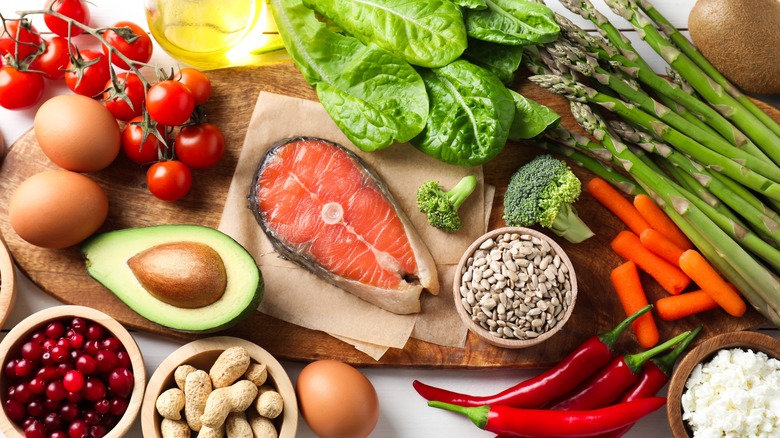The FDA Rules For Using A 'Healthy' Label On Foods
The word "healthy" gets bandied around a lot in relation to the food we eat. But what actually constitutes healthy food? On December 19, 2024, the FDA clarified the matter, defining what it considers appropriate to merit the term.
To be designated a healthy food under the FDA's guidelines, a product must include a prescribed amount of ingredients from at least one food group or subgroup outlined in the Dietary Guidelines for Americans, a document published by the U.S. Department of Agriculture and the U.S. Department of Health and Human Services. These food groups include fruits, vegetables, grains, dairy, and protein foods. To qualify, a food item must also adhere to strict limits on added sugars, saturated fats, and sodium content.
Looking more closely at the criteria defining a "healthy" food by the agency's standards, the fruits and vegetables category includes fresh, frozen, and canned produce, as well as dried fruits and 100% juices. Grains encompass whole grains and whole-grain products, along with enriched refined grains and enriched refined-grain products. So, it's possible that some of your favorite pasta recipes for easy weeknight dinners still fit within the healthy category.
The dairy classification has been expanded to include lactose-free and reduced-lactose milk products, as well as fortified soy beverages. However, the products must primarily be low-fat or fat-free. The definition of "protein foods" includes lean and low-fat meats and poultry, eggs from various bird species (making lesser-used options like turkey eggs fair game for the healthy label), and unsalted nuts, nut butters, seeds, and soy-based foods.
Foods that didn't make the cut, and identifying 'healthy' products at a glance
Some popular dairy products have been excluded from being labeled as "healthy" because they contain low levels of calcium. For this reason, cream, sour cream, and cream cheese didn't make the cut. Not surprisingly, cream- and sugar-rich desserts, like premium ice cream, are also excluded from the "healthy" food classification because of their high sugar and low calcium content. Some products that previously qualified to be tagged as healthy, including sugary cereals and highly sweetened yogurt, no longer merit the label under the FDA's guidelines.
According to a news release, the FDA's restrictions aim to address the "ever-growing crisis of preventable, diet-related chronic diseases in the U.S. that requires immediate action." The hope is that in addition to helping consumers make more mindful food choices, the "healthy" designation will also prompt manufacturers to increase their production of nutritious products.
The FDA is also offering a packaging symbol that food makers can add to their products, visually signaling to consumers at a glance that an item meets the mandates for a "healthy" designation. The label will be available for application to food packages in addition to the word "healthy," and the inclusion of either is voluntary for manufacturers. "Symbols may be particularly helpful for those who are less familiar with nutrition information to identify foods that can be the foundation of a healthy eating pattern," the FDA stated.


